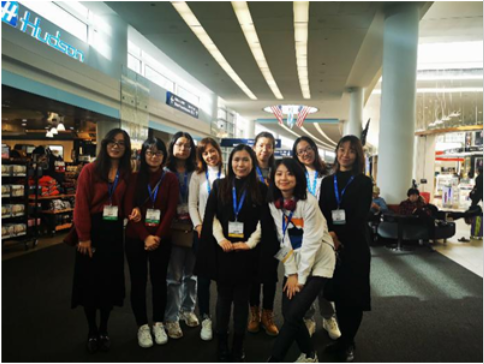From October 30 to November 3, the 89th Annual Meeting of American Thyroid Association (ATA) was held in Chicago, U.S. The 20th Annual Meeting of European Group on Graves’ Orbitopathy (EUGOGO) was held in Pisa, Italy from November 7 to 9. In these two top-notched meetings in the field of thyroid, team members from Department of Endocrinology led by Professor Shi Bingyin delivered 3 oral presentations and 7 poster exchanges, illustrating the basic and clinical frontier research results of thyroid tumors, Graves’ disease and Graves’ orbitopathy,etc.
Dr. Wu Liping and Dr. Zhao Fengyi contributed two poster presentations entitled ‘Construction and identification of recombinant adeno-associated virus vector of human TSHR A subunit’ and ‘Establishment of a mouse model with Graves’ disease using AAV expressing TSRA unit’, which explored novel approaches for the establishment of Graves’ disease models. Dr. Wang Yue and Dr. Zhang Meng delivered two oral presentations entitled ‘Identification of CD4+ cytotoxic T cells, a new type of pathogenic cells of hyperthyroidism and exophthalmos, using single cell RNA sequencing’ and ‘Rapamycin effectively alleviates retro-orbital fibrosis and fat deposition in mouse models with BALB/cGraves’s orbitopathy’ to illustrate the new research progress on the prediction and treatment of Graves’s orbitopathy.
Novel breakthroughs have also been made in the mechanism underlying thyroid diseases. Associate Research Fellow Yang Qi presented a poster presentation entitled ‘TET1 accelerates thyroid cancer progression by stabilizing HIF1α through CK2/Akt/GSK-3β signal axis’. A series of studies have confirmed that TET1 plays different biological roles under different oxygen partial pressures, and stabilizes HIF1α and accelerates the thyroid cancer progression through the CK2/Akt/GSK-3β signal axis. Associate Research Fellow Fu Jiao and Dr. Zhao Yang collected surgical specimens from 38 patients with papillary thyroid carcinoma (PTCs) and found that HMGB3 promotes the thyroid carcinoma proliferation by regulating the PTEN signaling pathway. Doctoral student Li Xinru demonstrated that STAG2 can regulate the glutamine metabolism in thyroid cancer via the ERK/AKT/GSK3β/c-Myc signaling pathway. Doctoral student Sui Fang found that NG2 can affect the thyroid function via the c-Myc/miR-142/TSHR signaling pathway, providing novel thoughts for thyroid dysfunction and other metabolic diseases.
